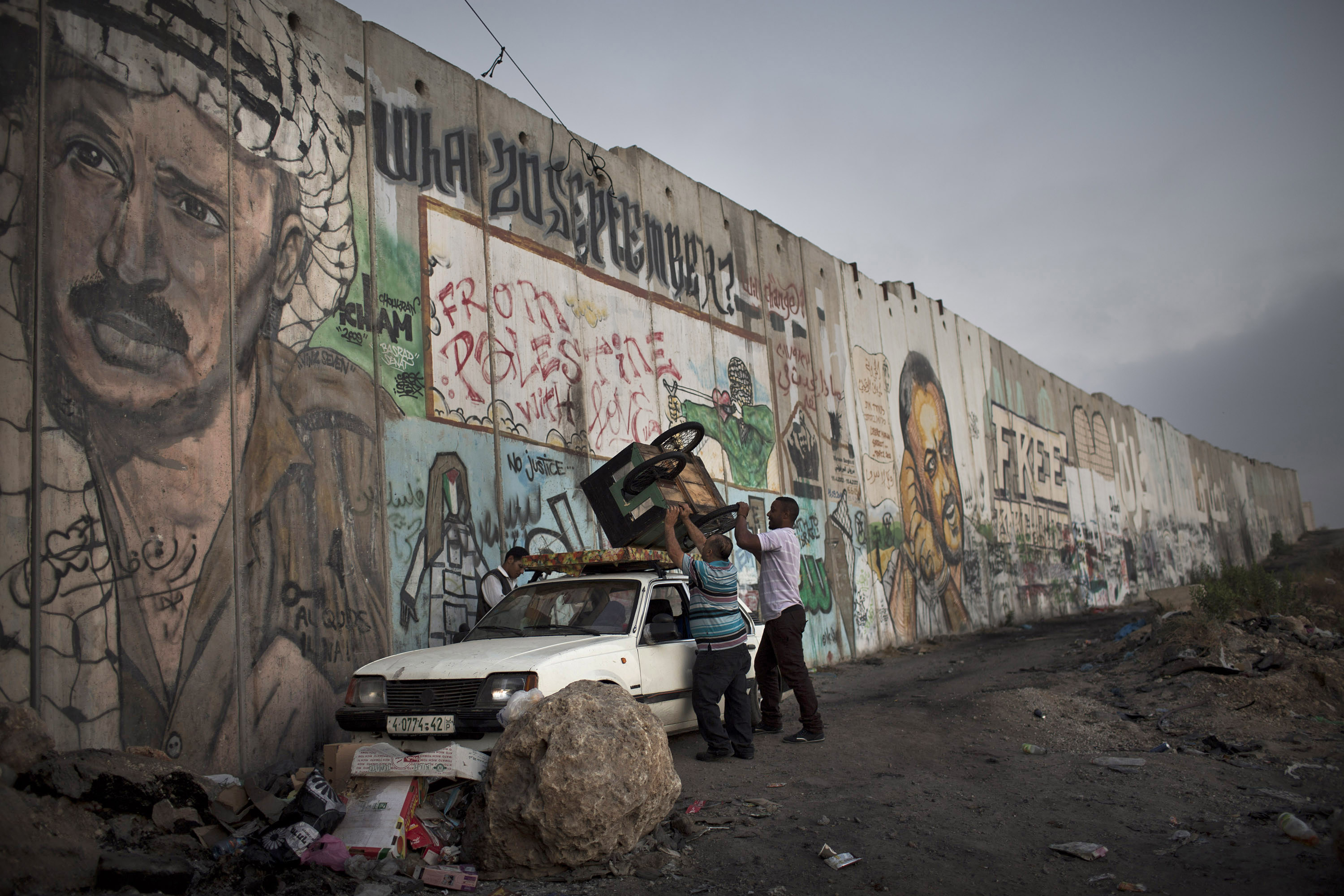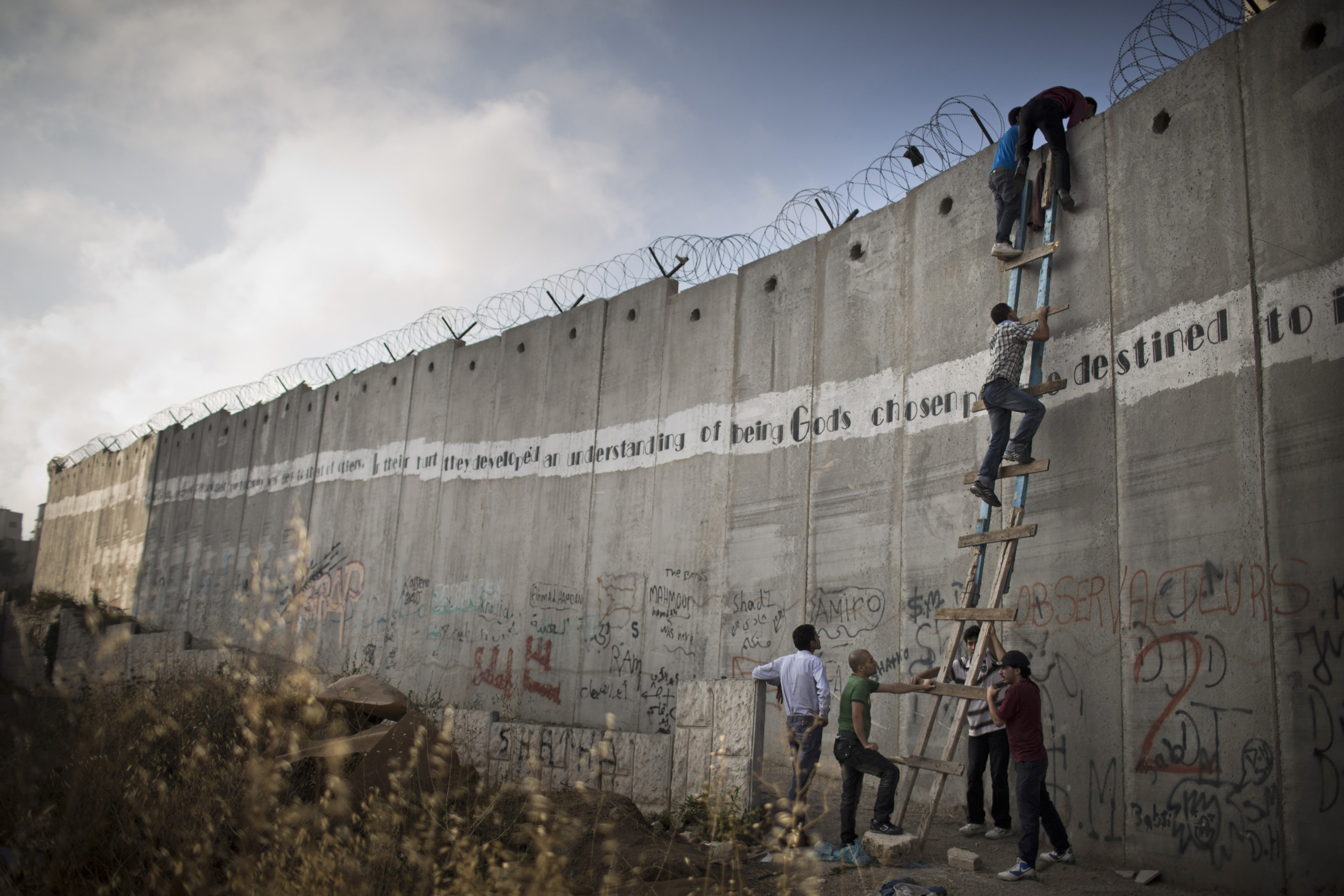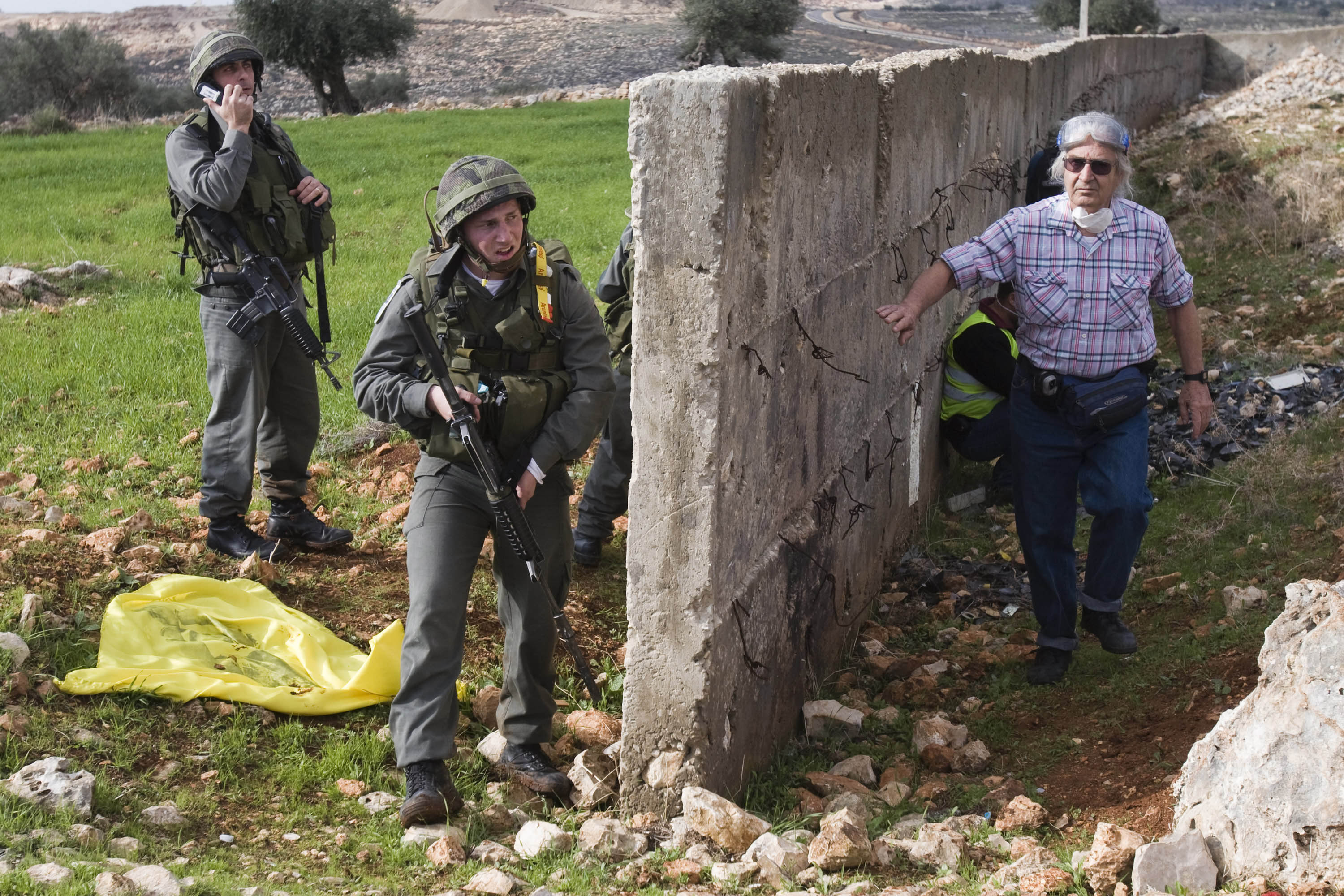Israeli photographer Oren Ziv and Palestinian photographer Ahmad Al-Bazz work together documenting social and political issues in Israel and in the Palestinian territories as part of the ActiveStills collective, a group of young activist photographers. This Emerging Photographers photo essay depicts protest actions and daily struggle on both sides of the Separation Wall from the early 2000s to present day. Ziv and Al-Bazz take a social justice approach to their photography, seeking to change the current political reality. This week marks the 50th anniversary of the Six-Day War, which Palestinians call “al Naksa,” or “The Setback,” a time for Israelis and Palestinians to reflect on the war’s continuing legacy.
Photographer’s note: Oren Ziv
I started to photograph the wall in the first years it was built, in the early 2000s. At that time Israeli activists were joining Palestinians protesting against something that was being built on their lands. It was a new thing that Israelis joined Palestinians “from their side.”
Going to the demonstrations changed the way I looked at things and also how I photographed them. As an Israeli, you are educated from young age to fear Palestinians. In those demonstrations, the Israeli activists coming from the “Palestinian side” were attacked by the Israeli army, which regarded any demonstration in the West Bank as illegal.
There is no photographer in our collective that was not injured, detained or harassed by Israeli forces while covering anti-wall demonstrations. From the army perspective, all media including wire photographers that cover protests are part of them, and therefore can be targeted and arrested. Just last month, AP photographer Majdi Mohammed was shot with live ammunition by an Israeli settler while covering protest supporting Palestinian political prisoners. He was wearing a flak jacket with the “Press” logo on it. The man who shot him was not arrested by the Israeli police.
I have focused my documentation less on the building of the wall, or the aesthetic elements of it, and more on the resistance to it, and the effect it has on people’s lives. For me, the civil act of resisting a wall that is separating people from their land — and not as Israel tries to say for “security” — is the main point. Palestinians are often portrayed as “victims” or “terrorists” and not as political subjects who can struggle to demand their rights.
Israelis and Palestinians working together is a very sensitive issue these days. One the practical level, it’s hard to meet, as our Gaza photographers cannot access the West Bank or Israel, and the West Bank photographers cannot go into Israel. It important that the viewers of our photos will get the idea that we join forces in order to make a political statement, not in order to be objective.
Our photos are a direct call to end the Israeli occupation and for the Palestinians to receive their full rights. One of the photos — people climbing over the wall during Ramadan to attend a prayer in Jerusalem —shows in one image the whole story. The way Israel separates people from their holy places, and the fact that with a simple ladder you can get over a “security system” that costs millions.
In that sense, it reminds us that although the wall represents a whole policy of separation, sometime you can just ignore it and create another political reality on the ground.
Another photo shows people breaking the wall with hammers, and that photographic moment, though it is symbolic, is very strong. We gained access to that action because we documented the demonstrations for years, and local activists trust us. But a lot of our work is going again and again to the same place, even were is no “news value” for the mainstream media.
Many times, we feel our photos are there to show that the struggle still exists, despite the attempts to oppress or ignore it.
Photographer’s note: Ahmad Al-Bazz
I see the Separation Wall as one of the climactic colonial tools that Israel has used in the 21st century. It’s not simply a straight line that divides Israel from the West Bank. It is double the length of the Green Line that annexes more and more lands and settlements to the main colonial entity which is known today as Israel.
The Wall has been a boiling spot for protests since 2002, when a big wave of the popular resistance started in many villages adjacent to the wall path, some of them still protesting until today such as Bil’in and Ni’lin. As a photographer, it was so important to document the struggle in several locations.
At ActiveStills, it has been a long-term documentation starting in 2005 that is still going on until today. The Wall has been a main location where angry, oppressed protesters want to fight the occupation, refugees march calling for their right of return to their towns behind the wall, a point where workers and farmers suffer every single morning, and many others. All of what I’ve mentioned makes it essential for me as a photographer to be there.
I have no problem working with Israelis like Oren as long as: a) It’s under resistance framework and b) The Israeli person admits the full comprehensive rights of the Palestinian people under international law. Oren is an example of the brave anti-Zionist Israeli youth who understand the colonialism in this country from its roots, which started in the late 19th century and produced a state called Israel in 1948 as a result.
Working with Israelis in the field of activism photography means a lot to me. First of all, it shapes a sample of the relation that I wish to spread between Palestinians and Israelis until dismantling the current system. We also depend on each other in some coverage when we want to produce stories containing photographs from both sides of The Wall, considering movement restrictions situation in this divided country. I also believe that a Palestinian-Israeli message could have a stronger effect on audiences, more than a Palestinian or an Israeli message alone.





















































